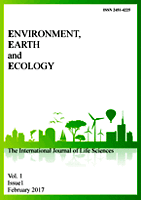| 1. |
Antal J (1985) Ochrana pôdy a lesotechnické meliorácie II: Návody na cvičenia. Príroda Bratislava.
|
| 2. |
Antal J (1999) Agrohydrológia. SPU Nitra.
|
| 3. |
Antal J et al. (2014) Hydrológia poľnohospodárskej krajiny. SPU Nitra.
|
| 4. |
Boonstra J (1994) Estimating peak runoff rates. Drainage principles and applications, pp. 111-143. ILRI Publication 16. Wageningen, The Netherlands, ILRI.
|
| 5. |
Chow VT (1964) Handbook of Applied Hydrology. McGraw Hill New York.
|
| 6. |
Dostál T, Váška J, Vrána K (2000) SMODERP — A Simulation Model of Overland Flow and Erosion Processes. Application of Physically Based Models. pp. 135-161. doi: 10.1007/978-3-662-04295-3_8.
|
| 7. |
Ebrahimian M, Nuruddin AAB, Soom MABM, Sood AM, Liew JN (2012) Runoff Estimation in Steep Slope Watershed with Standard and Slope-Adjusted Curve Number Methods. Polish Journal of Environmental Studies 21(5):1191-1202.
|
| 8. |
Govers G, Takken I, Helming K (2000) Soil roughness and overland flow. Agronomie 20:131-146. doi: 10.1051/agro:2000114.
|
| 9. |
Hrádek F (1981) Aplikace genetického vzorce intenzitního typu pro výpočet kulminačních prutoku Q100 na malých povodích. Praha VŠZ.
|
| 10. |
Hrádek F (1989) Řešení maximálního povrchového odtoku na modelovém povodí. Vysoká škola zemědělská v Praze.
|
| 11. |
Kavka P, Zajicek J (2013) Soil erosion model SMODERP - 1D and 2D modelling. SGEM2013 Conference Proceedings, June 16-22, 2013. pp 895-902. doi:10.5593/SGEM2013/BB2.V1/S11.037.
|
| 12. |
Kavka P (2011) Kalibrace a validace modelu SMODERP. České vysoké učení technické v Praze.
|
| 13. |
Kondrlová E, Muchová Z (2008) Priestorové analýzy v GIS pri posudzovaní ohrozenia územia vodnou eróziou. Študentská vedecká konferencia FZKI 2008, Nitra - 22. April 2008. SPU Nitra, p. 78-84.
|
| 14. |
Kubinský D, Weis K, Fuska J, Lehotský M, Petrovič F (2015) Changes in retention characteristics of 9 historical artificial water reservoirs near Banská Štiavnica, Slovakia. Open Geosciences 7(1):880-887. doi: 10.1515/geo-2015-0056.
|
| 15. |
Látečka M, Muchová Z (2005) Pozemkové úpravy a cesty Pozemkové úpravy a cesty. SPU Nitra.
|
| 16. |
Liu Y B, Gebremeskel S, De Smedt F, Hoffmann L and Pfister L (2006) Predicting storm runoff from different land-use classes using a geographical information system-based distributed model. Hydrological Processes 20:533–548. doi:10.1002/hyp.5920.
|
| 17. |
Muchová Z, Antal J (2013) Pozemkové úpravy. SPU Nitra.
|
| 18. |
Muchová Z, Leitmanová M, Petrovič F (2016) Possibilities of optimal land use as a consequence of lessons learned from land consolidation projects (Slovakia). Ecological engineering 90:294-306. doi:/10.1016/j.ecoleng.2016.01.018
|
| 19. |
Németová Z (2016) Modelové riešenie povrchového odtoku z poľnohospodársky využívaného územia. SPU Nitra.
|
| 20. |
Qian F, Cheng D, Ding W, Huang J, Liu J (2016) Hydraulic characteristics and sediment generation on slope erosion in the Three Gorges Reservoir Area, China. Journal of Hydrology and Hydromechanics. 64(3):237–245. doi: 10.1515/johh-2016-0029.
|
| 21. |
Šinka K, Muchová Z, Konc Ľ (2015) Geografické informačné systémy v priestorovom plánovaní. SPU Nitra.
|
| 22. |
Šinka K, Kaletová T (2013) Determining the characteristics of direct runoff from real rain using GIS environment. Acta horticulturae et regiotecturae 16(2):48-52.
|
| 23. |
Šinka K, Konc Ľ, Muchová Z (2015) Výpočet charakteristík povrchového odtoku s využitím GIS a modelu DesQ-MaxQ. Krajinné inžinierstvo - problémy, trendy a perspektívy 2015, meeting: 13. November 2015. p. 74-83.
|
| 24. |
Šinka K, Moravčík Ľ (2015) Stanovenie drsnosti povrchu pôdy a jej význam pri modelovaní vodnej erózie. Environmentálne indexy, oblasti ekologického záujmu a ekosystémové služby v krajine. VUPOP, p. 43-48.
|
| 25. |
Zhao N, Yu F, Li C, Wang H, Liu J, Mu W (2014) Investigation of Rainfall-Runoff Processes and Soil Moisture Dynamics in Grassland Plots under Simulated Rainfall Conditions. Water 6:2671-2689.
|








